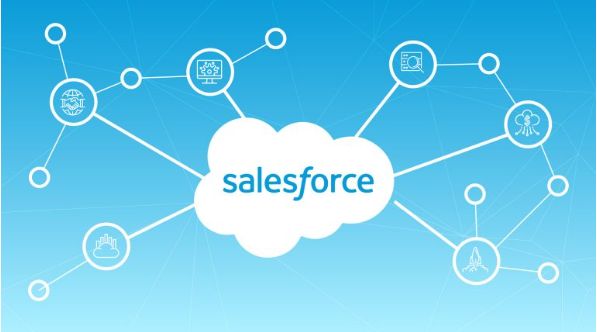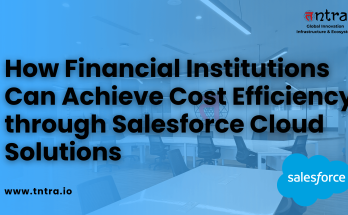If the integration strategy of your organization is not watertight, every day, approximately, thousands of dollars are lost to your account with Salesforce. Read about how scattered, disorganized information sabotages the most brilliant efforts in analytics. The following blog also talks about possible approaches, such as API-based and middleware approaches, data cleaning methods, and various security ones that you can ignore. Find real-world examples of how integrated, organized data can transform businesses-from healthcare networks to e-commerce retail. Continue reading to learn more.
The whole world runs on data. Customer data, transaction data, behavior data – like it or not, every modern company has to wrangle an avalanche of information just to survive. Yes, you’ll want your fancy dashboards and AI predictions. But guess what? If your data is garbage, your insights are garbage.
That’s why seamless Salesforce integration is more than some buzz phrase your marketing department throws around. We’re talking about orchestrating data from multiple platforms – think e-commerce websites, marketing automation tools, support ticket systems – into a clean, unified source of truth. Ideally, you’re funneling all that knowledge into a single place: Salesforce. And if Salesforce data integration doesn’t happen properly, you’re basically trying to build a rocket with duct tape and chewing gum.
In this piece, I’ll show you why data integration in Salesforce is the secret sauce behind top-performing businesses, how to do it without wrecking your system architecture, and why organized data in Salesforce is the linchpin for everything else you’re doing. Buckle up.
Understanding Data Integration in Salesforce
What is Seamless Data Integration?
Seamless data integration refers to the smooth, automated merging of data from multiple sources into a unified system—in this case, Salesforce. The goal is to minimize friction between platforms, eliminate manual data entry, and ensure real-time updates.
What is seamless data integration?
Seamless data integration connects disparate systems and databases into a single view, enabling users to access clean, consistent, and up-to-date information across departments.
Why Organized Data in Salesforce is Critical
Organized data fuels your CRM’s intelligence. It impacts everything—from lead scoring and sales forecasting to customer service automation. Salesforce offers powerful features for data management, but integrating external data effectively is the real differentiator.
How does Salesforce organize your data?
Salesforce organizes your data into standard and custom objects, using relational models. With proper integration, this structure becomes a dynamic source of real-time insights.
Speed: Integrated data = instant customer insights.
Accuracy: No one’s second-guessing if that lead is still open or if a sale actually closed.
Scalability: If your business doubles in a year (hey, we can dream), integrated data ensures you’re not manually patching holes in spreadsheets all night.
A Gartner report claims that 70% of ERP initiatives will not meet their original objectives due to integration shortfalls. Talk about an expensive lesson in data mismanagement.
The Importance of Organized Data in Salesforce
Why Organized Data Matters
If data is gold, organized data in Salesforce is a gold bar, neatly stacked in Fort Knox. It’s secure, accounted for, and accessible. When you know exactly how many leads came in, where they came from, and how quickly they’re converting, you can make smarter decisions. Otherwise, you’re basically driving with your eyes closed.
Let’s not sugarcoat this: disorganized data can cripple your company or any other software product engineering company. Here’s how:
- Lost Opportunities: Without a single source of truth, your sales teams might call the same lead twice or fail to follow up on a warm prospect.
- Bad Analytics: If you’re mixing apples and oranges, your dashboards are worthless.
- Poor Customer Experience: Nothing says “we don’t care” like having to explain your problem to three different support reps because the notes aren’t updated in Salesforce.
Benefits of Seamless Data Integration
Seamless Salesforce integration moves you from duct-taped spreadsheets to a pristine, frictionless pipeline of truth. Not only does that keep your leads and transactions accurate, but it also simplifies how your teams share information. And that translates to real ROI:
- Accessibility: Everyone has real-time access to the same data, from your CFO to your junior intern.
- Customer 360: Know your customer better than they know themselves – purchase history, service tickets, marketing touchpoints, the works.
- Faster Decision-Making: When your dashboards reflect fresh, consistent data, your team can act on insights immediately.
Best Practices for Seamless Data Integration
1. Defining Clear Integration Goals
- The first step is always to define your objectives. If you don’t know why you’re integrating or which data matters, you’ll end up with a glorified experiment that drains resources.
- Align with Core Business Strategy: Are you trying to increase sales conversions? Reduce churn? Improve forecasting accuracy? Your salesforce solutions should be shaped by these overarching goals.
- Set KPIs: Maybe it’s as simple as “reduce data errors by 50%.” Or “speed up lead follow-up time by 30%.” Knowing the target helps you design the right systems.
2. Choosing the Right Integration Method
- API-Based Integration
If you want quick, real-time data pushes, API-based integrations are your best friend. Sales, support, or marketing apps use REST or SOAP APIs to dump data into Salesforce. Pros? Real-time updates and relative simplicity. Cons? It can get messy if you’re connecting a dozen or more systems.
- Middleware Solutions
Remember MuleSoft? Salesforce snatched it up for a cool $6.5 billion back in 2018 for a reason. It acts as a middle layer that transforms data, enforces salesforce data integration rules, and ensures everything flows seamlessly. Other big names: Jitterbit, Dell Boomi, and Informatica. If you’re hooking up multiple data sources and want a single orchestration tool, you might consult a salesforce consulting firm or a salesforce data solutions company in Maryland to get your architecture right.
3. Ensuring Data Quality During Integration
The old “garbage in, garbage out” rule absolutely applies to data integration with Salesforce. If you’re funneling in duplicates, incorrect formats, or inconsistent naming conventions, no integration wizardry can save you.
- Data Cleansing Routines: Tools like DemandTools or native Salesforce deduplication modules can tidy up your database.
- Standardized Fields: Decide on naming conventions, formats, and required fields for records before you start piping data in.
- Validation Rules: Build in guardrails. If your team tries to push incomplete data, let Salesforce spit it back in their face – politely, of course.
4. Implementing Layered Security Measures
Secure data handling in Salesforce is non-negotiable. It’s 2025, and we’ve seen more data breaches than we care to remember.
- Encryption: Protect data both at rest and in transit. If you’re dealing with healthcare or financial records, compliance demands it.
- Access Controls: Don’t let your interns snoop through your leads or your entire pipeline. Set up role-based access.
- Regular Security Audits: If something’s vulnerable, hackers (or unscrupulous competitors) will find it. Keep your environment locked down.
Tools and Techniques for Effective Data Integration
Salesforce Native Integration Tools
- MuleSoft: A robust integration platform. Great if you can handle the complexity and cost.
- Apex: Salesforce’s native coding language. Powerful, but not everyone wants to burn time writing custom scripts.
- Salesforce Connect: Ideal for external data sources you’d rather not replicate fully in Salesforce.
Each of these tools serves different needs. A large-scale enterprise might call in a salesforce development company to build custom Apex or set up MuleSoft. Smaller shops can sometimes get by with out-of-the-box connectors.
Third-Party Integration Solutions
If native Salesforce solutions don’t cut it, you can always look at Jitterbit, Zapier, Boomi, or Informatica Cloud. These are tried-and-tested platforms that can unify complex data flows.
- Flexibility: Map nearly any data source to Salesforce fields.
- Pre-Built Connectors: Speed up integration with connectors to major apps like Shopify, Marketo, or NetSuite.
- Scalability: Handle large data sets without choking your system.
A salesforce consulting company or a salesforce customization services provider can recommend which product fits your environment. Just remember that more complex tools may come with steeper price tags. Choose wisely.
Case Studies: Successful Data Integration in Action
Healthcare Provider Using Salesforce Data Cloud Integration
A major hospital network needed to unify patient data across multiple EMR systems and insurance providers. They turned to a salesforce data solutions company in Maryland skilled at HIPAA-compliant setups. After building a robust data governance framework and hooking everything up via MuleSoft, they saw a 40% reduction in administrative time for patient intake. More importantly, the clinical staff finally had a single view of each patient’s history – no more fumbling through three separate portals.
E-Commerce Brand’s Salesforce Integration Example
An online retailer that used Shopify, Zendesk, and a custom-built loyalty app was drowning in data chaos. They hired a salesforce consulting company to implement a real-time, API-based approach for salesforce data integration. Within six months:
Abandoned Cart Rate dropped by 15% because personalized emails went out faster.
Customer Satisfaction spiked after unified visibility let support see every purchase and ticket.
Revenue: The big one. They logged a 10% sales bump from better cross-selling and upselling.
Wrapping Up
The entire CRM landscape thrive or fail on one simple factor: the quality of your data. If you’re still cutting corners, you’re basically lighting money on fire. This is an era where data integration salesforce solutions can catapult a business from scrappy underdog to unstoppable juggernaut – if you implement them correctly.
Companies that embrace seamless data integration in Salesforce – from the smallest startup to the largest enterprise – stand to gain a real competitive edge. Whether it’s through salesforce integration with third-party apps, leveraging salesforce solutions, or building custom workflows with a salesforce development company, the path forward is clear: master your data or get left behind.

